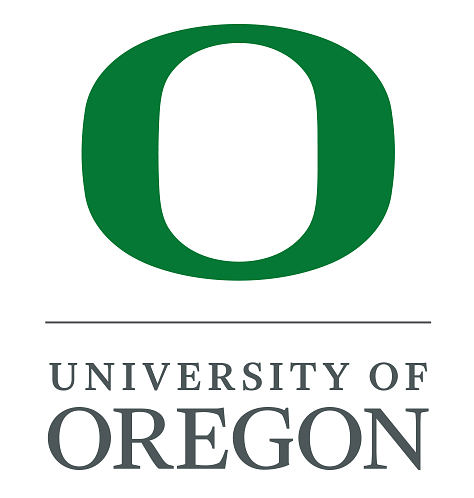Each quarter, we’ll deliver updates and highlights of the transformative work accomplished by our Integrated Design Lab network partners.

University of Idaho IDL
- Despite a year of amendments in 2022, the Idaho Energy Code will remain mostly intact in 2023–2024. In November, the Division of Building Safety proposed to the Idaho Legislature their recommendation that the 2018 IECC remain in place with adjustments to a few portions of the energy code amendments. With general agreement among stakeholders, the main topic of discussion was the enforcement of residential airtightness standards, which led to the following amendment inclusions:
- Instead of requiring a blower-door test for one in every five homes and a maximum of 5ACH50, the Idaho code will revert to 2018 IECC language. This reduces the infiltration to 3ACH50 but does not require a blower-door test, as visual inspections are allowed.
- Maintaining ceiling insulation at R-38 in climate zone 5.
Based on these amendments, the UI IDL ran a series of simulations looking at Idaho-specific impacts of infiltration and ceiling insulation. The UI IDL found that infiltration had the largest impact (saving $40–$100 or more per year), while the ceiling insulation had a smaller impact (saving $10–$30 per year). These findings are particularly important as only 14% of Idaho homes currently meet the required 3ACH50 or lower. And, on average, one in five Idaho residents cannot afford a utility bill each month. The UI IDL is hoping to publish a full account of these results at a conference this summer.
- The IU IDL used funds from Northwest Energy Efficiency Alliance to install eight additional luminaire level lighting controls (LLLC) in our building, including in a conference room and private offices, to provide more training opportunities and show the control capabilities of LLLC. The IU IDL is also working with the local Valleyview Elementary school to commission their new LLLC system as an example for other schools in the area.
- In the fall, the IU IDL hosted a series of lectures on the Idaho Energy Code, including two on commercial lighting.
- IU IDL members Damon Woods and Felino Macatuno received a University Alumni Award for Excellence for their work on an ongoing project for an infrared thermostat that includes LiDAR for mapping a room, identifying occupant locations, and providing targeted thermal comfort. The award further recognized the important research contributions from IU students.

Montana State University IDL
- Across various MSU campuses, the MSU IDL worked with Cushing Terrell to conduct a series of daylighting assessments to evaluate the performance of three upcoming buildings for MSU’s College of Nursing.
- The MSU IDL is coordinating with AIA Montana board members to introduce protocols to evaluate energy performance for the AIA Montana Awards. The University of Washington IDL has been instrumental in this effort by providing relevant information to the board members.
- The MSU IDL compiled a set of presentations on building performance evaluation software (e.g., daylighting and energy analysis) to educate the students of MSU’s School of Architecture. The presentations guide students through the process of using Climate Studio, a building performance evaluation software, in early stages of the architectural design process. The presentations also familiarize the students with program outputs and results processing that provide an understanding of a building’s energy and daylighting performance. Further, the MSU IDL intends to create additional modules in the process of introducing a short course on building performance evaluation in the undergraduate curriculum of the School of Architecture.

University of Oregon IHBE/Baker Lab
- Energy and Buildings published a journal paper authored by UO IDL members. The paper outlines a digital daylighting simulation workflow based on the state-of-the-art Radiance suite of daylighting simulation tools. The UO IDL developed this workflow to assess non-visual health performance in buildings under natural daylighting and electric lighting sources. The paper is a direct result of the study we completed last quarter that explored 1) LLLC potential to supplement circadian dosing exposure when daylighting is insufficient or unavailable, and 2) LLLC impact on lighting energy performance. This work included testing the recommended circadian dosing levels specified by the WELL standard. The abstract and link to the journal paper is available here.
- The annual AIA Oregon Architecture Awards were held in Portland, Oregon, on November 9. Our team prepared carbon emissions performance data that helped this year’s jury of 15 architects decide on the winning project for the Architecture 2030 Award. This award is presented to projects that show exceptional and holistic design practices while meeting or exceeding the carbon emissions reduction requirements of the 2023 Challenge. Recognized projects included:
- The Adidas North American Headquarters Expansion in Portland, Oregon, by LEVER Architecture. This project reported an 87% CO2 emissions reduction compared to the average US building of the same type and size.
- Inn The Ground in Carlton, Oregon, by GBD Architects. This project reported 85% CO2 emissions reduction compared to the average US building of the same type and size.
- Viewfinder apartments in Tigard, Oregon, by Scott Edwards Architecture. This project reported 80% CO2
emissions reduction compared to the average US building of the same type and size.
For the full list of award recipients and more information on this event,visit AIA Oregon’s website.
- As part of the Institute for Health in the Built Environment (IHBE), the UO IDL recently kicked off a project that will explore infiltration of all-wood façade construction techniques. The project is supported by the TallWood Design Institute (TDI) and the USDA Agricultural Research Service (ARS), along with an IHBE collaboration with Oregon State University’s A. A. Red Emerson Advanced Wood Products Laboratory. This research will use a lab setting to investigate a series of common panel-to-panel joint designs and construction techniques (e.g., tolerances, sealant, and weather barrier) for all-wood mass timber façades (e.g., cross-laminated timber and mass plywood panels), employing applicable ASTM standards for infiltration testing. The results will yield empirical data for design and construction teams detailing mass timber building enclosures. Through this research, the UO IDL hopes to address several 2023–24 core research priorities, including:
- Alleviating anticipated challenges in wood construction by providing feedback and validation of current and proposed construction techniques.
- Conducting structural research in the validation of existing connections, including a cost-benefit analysis of connection types in conjunction with optional construction treatments to prevent moisture- and heat-loss-related performance concerns.
- Testing common techniques and the efficacy of additional treatments to enhance durability and moisture-related performance based on infiltration.
- Develop outreach and research materials that educate architects, engineers, and developers on modern timber construction.

University of Washington IDL
UW IDL provided five technical presentations to architecture and engineering firms that included sections on LLLC, very high efficiency dedicated outside air systems (very high efficiency DOAS), and secondary glazing systems. These presentations featured architects from the UW IDL’s Partnership Firms, and included a UW-IDL-hosted webinar covering energy codes, building performance, and energy-efficient technologies.
In collaboration with UW Master of Architecture students, the UW IDL developed and delivered no-cost simulations and how-to videos for architects and engineers to support increasing building energy performance simulations for envelope, lighting, HVAC and other early-design-stage efficiency strategies. These videos can be found on the UW IDL’s website.
The UW IDL worked with AIA Seattle to administer and provide technical support for the 2023 Energy in Design Award. The award went to Inspire Apartments by Public47 Architects, a 6-story building that generates 108% of the annual energy for its 42 residential units, and is the first multifamily building to participate in Seattle’s Living Building Pilot Program. The project includes triple-glazed windows, a heat-recovery ventilation system, and an energy dashboard in the lobby that displays energy production and utilization to provide tenants with a visible feedback loop.
The UW IDL is providing ongoing market scanning and outreach to identify and document groundbreaking LLLC implementation. The UW IDL’s ongoing engagement with building owners and designers seeks to provide learning and synthesis of best practices for individually controlled light fixtures as they are adopted in the market in three key areas: 1) design, 2) construction, and 3) operations. This work supports Northwest Energy Efficiency Alliance’s efforts to increase market awareness and adoption of LLLC in the Northwest. Current activities include awareness-building presentations, case-study content development, and planned site visits with LLLC set-up and commissioning experts.
THE UW IDL provides technical guidance for goal setting and strategy selection to help design teams achieve more energy-efficient buildings. For example, the UW IDL has partnered with Integrus Architecture on two new K-12 school projects: Leota Middle School in Woodinville, Wash., and Oak Heights Elementary in Lynnwood, Wash. These schools seek to combine exemplary façade performance, advanced lighting controls, and high efficiency heat recovery ventilators and heat pumps to deliver exceptional energy performance. The UW IDL is leading the development of case studies of ultra-efficient buildings and how their design teams use peak-load analysis as part of an integrated design process to achieve exceptional energy-efficient performance while meeting budgetary constraints.
In collaboration with Solarc Energy Group and design firm NBBJ, the UW IDL provided technical assistance on the Mt. Edgecumbe Medical Center Campus, a new healthcare campus serving the region in and around Sitka, Alaska. A joint venture of Southeast Alaska Regional Health Consortium and Indian Health Service, this project includes the replacement of Critical Access Hospital and the construction of new outpatient clinic spaces. UW IDL’s scope includes energy evaluation, strategy development, energy modeling, and LEED evaluation and compliance.
The UW IDL was awarded a grant through the Bipartisan Infrastructure Law and the US DOE to form a Pacific Northwest Building Training Assessment Center (PNW BTAC). This grant was awarded through two US DOE programs: 1) The Industrial Assessment Center (IAC) Program—IACs at Trade Schools Community Colleges, and Union Training Programs, and 2) the BTAC Program.
The PNW BTAC aims to fill two gaps in building performance improvements: 1) a trained workforce, and 2) access to benchmarking and strategic roadmaps for energy efficiency and decarbonization, especially in disadvantaged communities. PNW BTAC student experiences will combine hands-on and virtual building audit training while creating technical roadmaps for regional building owners. The PNW BTAC will leverage partnerships with Pacific Northwest National Lab, Washington State Department of Commerce, City of Seattle Office of Sustainability and Environment, utility conservation programs, and Tribal entities throughout the Pacific Northwest region and northern California, including Northwest Indian College. The PNW BTAC will provide services to Washington, Oregon, and California.

Washington State University ID+CL
- In partnership with the National Renewable Energy Laboratory and Dodge Construction network, the WSU Integrated Design + Construction Lab (WSU ID+CL) conducted interview- and survey-based mixed-methods research on the impacts of industrialized construction in the construction and manufacturing industries. In October, we completed interviews with manufacturers, developers, contractors, labor and trade organizations, as well as architects and designers with expertise in modular, component, and panelized construction methods. Results are forthcoming.
- Additionally, we worked with project partners, Dodge Construction network, on a nationwide survey to measure contractor and manufacturer perceptions and use of industrialized construction. Key emergent themes include the perceived complexity of modular and panelized construction, a need for more intentional and approach-based training for specialty trade members, and the sustainability and energy-savings potential of this offsite construction approach as it pertains to addressing the energy and housing crises. The outcomes of this research will inform local and regional policies, trade organization support, workforce development, and government support of the fast-paced and quickly evolving industry. Results are expected to be published in Q1 2024.
- In November, WSU ID+CL members travelled to present two projects at the Behavior, Energy, and Climate Change (BECC) Conference in Sacramento, Calif. One presentation shared progress regarding the ongoing workforce development curriculum for building operators (Building Operators: Grid and Occupants (BOGO) training) that we are developing in partnership with the Northwest Energy Efficiency Council (NEEC) and Northeastern University. The BOGO Training is curated as an additional credential for the NEEC’s Building Operator Certification Fundamentals training program for vocational technology high schools and community colleges to improve entry-level building operators’ literacy in modern, grid-interactive buildings, building occupants, and occupant-centric controls. The project is funded by the U.S. DOE’s Building Technologies Office. The second presentation covered behavior change strategies we have been employing in our Energy and Comfort at WSU program.
- Following the successful installation of more than 300 Smart Power Strips (SPS) in the Summer of 2023, the Energy and Comfort team has expanded the campaign to three additional buildings. These new locations include the School of Design + Construction, WSU’s world-class veterinary facilities, and an academic building that hosts numerous faculty and research offices. With this new territory on WSU’s Pullman campus, our team quickly installed one hundred additional strips, bringing the total to more than 400 SPS since the study’s conception in Fall of 2021. Through coordinated engagement and extensive documentation, the growing team has managed to significantly increase both our rate of installation and awareness among staff and faculty in targeted buildings, including their awareness of our staff, materials, efforts, and language. We look forward to installing more SPS in the spring, which will total 500 strips by June 2024.
- Wrapping up another semester of in-person engagement with building occupants on WSU’s Pullman campus, the Energy and Comfort at WSU team worked with local building departments to successfully host an in-person trivia event. With the chance to win winter-themed prizes and equipment that would help them stay warm and comfortable in their office spaces, building occupants answered questions on a variety of topics, including electrical safety, fire safety, personal heating devices, WSU safety policy, energy use, and our SPS program. As some buildings on campus are chronically chilly due to fluctuating weather and temperature setpoints reduced to save energy, the event was an effective way to provide building occupants with comfort solutions and the opportunity to share the challenges they’ve faced in managing their comfort. Additionally, we have been active on our social media platforms, disseminating tips and safety guidelines for the use of space heaters.
